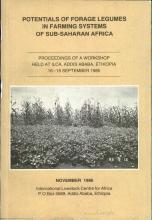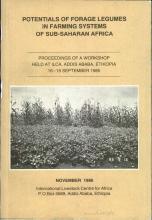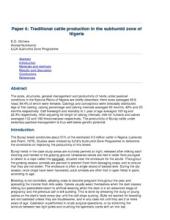Land Library Search
Through our robust search engine, you can search for any item of the over 73,000 highly curated resources in the Land Library.
If you would like to find an overview of what is possible, feel free to peruse the Search Guide.
/ library resources
Showing items 1 through 9 of 15.Presents results of a study of grazing behaviour and forage resources utilisation by herded cattle belonging to agropastoralists at Abet & Kurmin Biri in the subhumid zone of Nigeria as well time spent on walking, resting & watering.
Outlines the principles and practices of fodder-bank establishment and management in the sub-humid zones of West Africa. Summarises data that indicate the benefit of fodder banks to subsequent crops.
Describes the geology, relief, climate, major soil types, vegetation zones and land use patterns of the subhumid zone of Nigeria. Presents results of studies on natural forage productivity & composition and forage production constraints.
Describes effects of feeding Bunaji cows supplements of cottonseed cake, molasses-urea or fodder bank on birth & 1-year weight of calves and their viability to 1-year, and milk yield, for both calves & humans, of cows under an agropastoral management system.
Discusses the results of the measurement of environmental changes in grazed ecosystems with reference to correlated changes in livestock management in Kenya; includes techniques used to measure the changes, and proposed methods; presents data on a case study at a group ranch located in western Ke
Summarises the performance of three species of stylosanthes, viz, S. guianensis cvs Cook and Schofield, S. hamata cv. Verano and S. humilis under different production systems in Nigeria, such as in pure legume pastures, mixed pastures, with crops, in rangeland and under seed production.
Explains to what extent effective traditional African range management systems exist/existed, and discusses the factors which influence their incidence, persistence or effectiveness - focussing principally on sub-Saharan Africa.
Describes, briefly, sizes structures, general management and productivity of pastoral herds in the Kaduna Plains of Nigeria.
Reports findings of baseline studies as size of cultivated area, cropping patterns, management in relation to fallowing and labour & other inputs, yields and constraints to increasing grain & forage production among traditional crop farmers and Fulani agropastoralists at Abet & Kurmin








